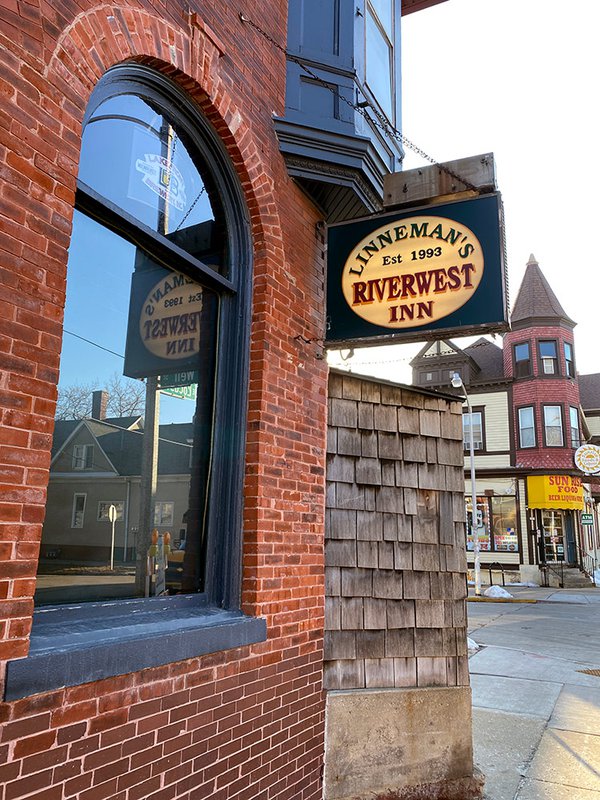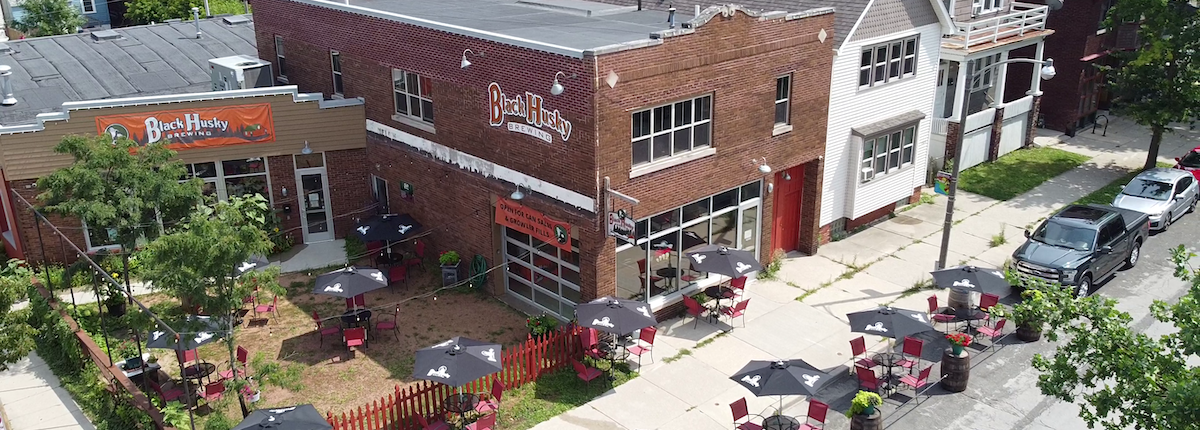
Since the 1980s, Riverwest has moved like the river it borders—a place of restless culture and commingling social currents. Literary, artsy Woodland Pattern, opened in 1980, remains Riverwest’s signature cultural center, along with Linneman’s Riverwest Inn, a music venue open since 1993, which has especially helped spawn the careers of local singer-songwriters, including Christopher Porterfield and The Record Company’s Chris Vos.
Center Street now has about six music and arts venues, including Company Brewing and The Jazz Gallery Center for the Arts, which re-imagines the celebrated 1980s Milwaukee Jazz Gallery. Neighbors recently bought the historic multi-purpose crossroads Polish Falcon Bowl, a hearty-spirited nexus of community activity for decades, including The Riverwest Follies.

The Riverwest Investment Cooperative recently purchased the Polish Falcon Bowl (above) to keep it viable for the community. Courtesy Milwaukee Journal-Sentinel
I’ve lived here most of my adult life, with an interval in Madison. In a sense I never left—much of Madison is culturally and politically comparable to Riverwest. In 1973, the Eastside Housing Action Committee joined Madison activists to rent a Locust Street storefront for a Milwaukee chapter of the Wisconsin Alliance, a statewide socialist organization.
This alternative publication’s predecessor, The Bugle American, resided in Riverwest until 1979 and the Crazy Shepherd found its way to the neighborhood 40 years ago. Another primary socio-political entity, Outpost Natural Foods, remains “the real heart of the counterculture west of the river,” Riverwest historian Tom Tolan writes. Now a successful regional chain, Outpost’s membership-and-volunteerism system sparked its growth—once oriented to “revolution,” now towards community and personal health.

Black Husky Brewing. Courtesy blackhuskybrewing.com
Milwaukee-style commercial success stories in Riverwest include Lakefront Brewery and Black Husky Brewing, as well as the restaurants Cafe Corazon, Wonderland, Big Daddy’s Barbeque and Soul Food, the slightly gourmet Nessum Dorma, Riverwest Filling Station, Cafe Centro, Dino’s MKE, and the carry-out food services, Scardina Specialties meats and deli, Shwarma King and Sticky Rice. Among the most colorful Riverwest retailers is Fischberger’s Variety, self-described as “Milwaukee’s punk-rock palace for gifts,” brims with stylish and witty toys, gifts, offbeat greeting cards, and knitting products. And Burke Candy remains, with always-tantalizing retail shop offerings. All these places are worthwhile.

Fischberger’s Variety Store on Holton Street. Courtesy onmilwaukee.com
A mark of the neighborhood’s deep-grained culture is Moberg Piano Sales and Service on Keefe Avenue, plum full of real acoustic pianos of all kinds.
In time, the neighborhood shifted politically, from the radically driven ESHAC to community-growth values, while remaining strongly left-leaning and bohemian. Witness the Peace Action Center, The Riverwest Artists Association, The Riverwest Neighborhood Association, community-oriented radio station WXRW, Riverwest Food Pantry and a vital arm of Milwaukee Riverkeepers environmental activists. The new Daily Bird may not replace the former Fuel Café’s punk-rock vitality. However, two indie recording studios recently opened.
Another Riverwest distinction: It now boasts the first two designated “bicycle boulevards” in Milwaukee: at E. Wright Street and N. Fratney Street (where I live). These streets have speed bumps each block and car traffic is limited. New curb bump-outs limit sharp car turns at intersections, and make pedestrian crossings shorter. A traffic circle was added to the Wright and Fratney Street intersection. Traffic circles are intended to allow traffic to flow through intersections slowly and efficiently, without requiring a full stop on either side. Bikers rejoice and roll, of course. And I now see neighbors walking their dogs right down the middle of Fratney Street.
Riverwest remains arguably the city’s most diverse and alternative-culture neighborhood, defying the city’s notorious segregation. Gentrification never infiltrated, despite condo development on bordering Commerce Street. Mortgages and rents remain moderate and median household income is $44,820, compared to the nation’s average of $62,843. A notably working-class population remains, with 39% holding a high-school degree or less, compared to the nation’s 30 to 35 percent working class. Historical ethnicities are Polish and Puerto Rican—a neighbor’s flagpole flies Puerto Rican and American colors year-round, and up the street is bi-lingual elementary La Escuela Fratney. Riverwest’s racial make-up is 64% white, 20% black, 8% Hispanic, 5% mixed races, and 3 % Asian.
________
This article was originally published in shorter form in a special neighborhoods history section of the April issue of The Shepherd Express magazine.

